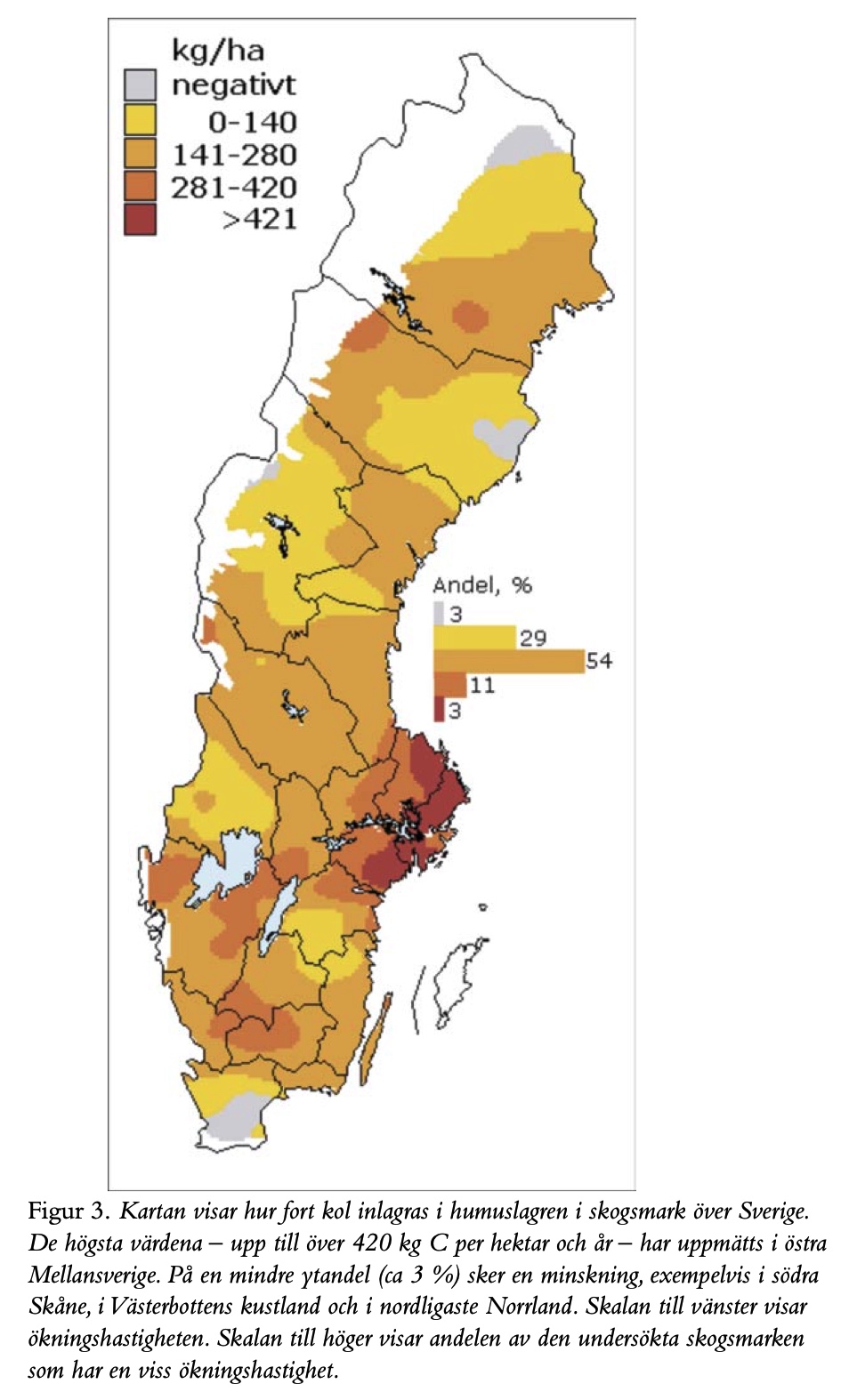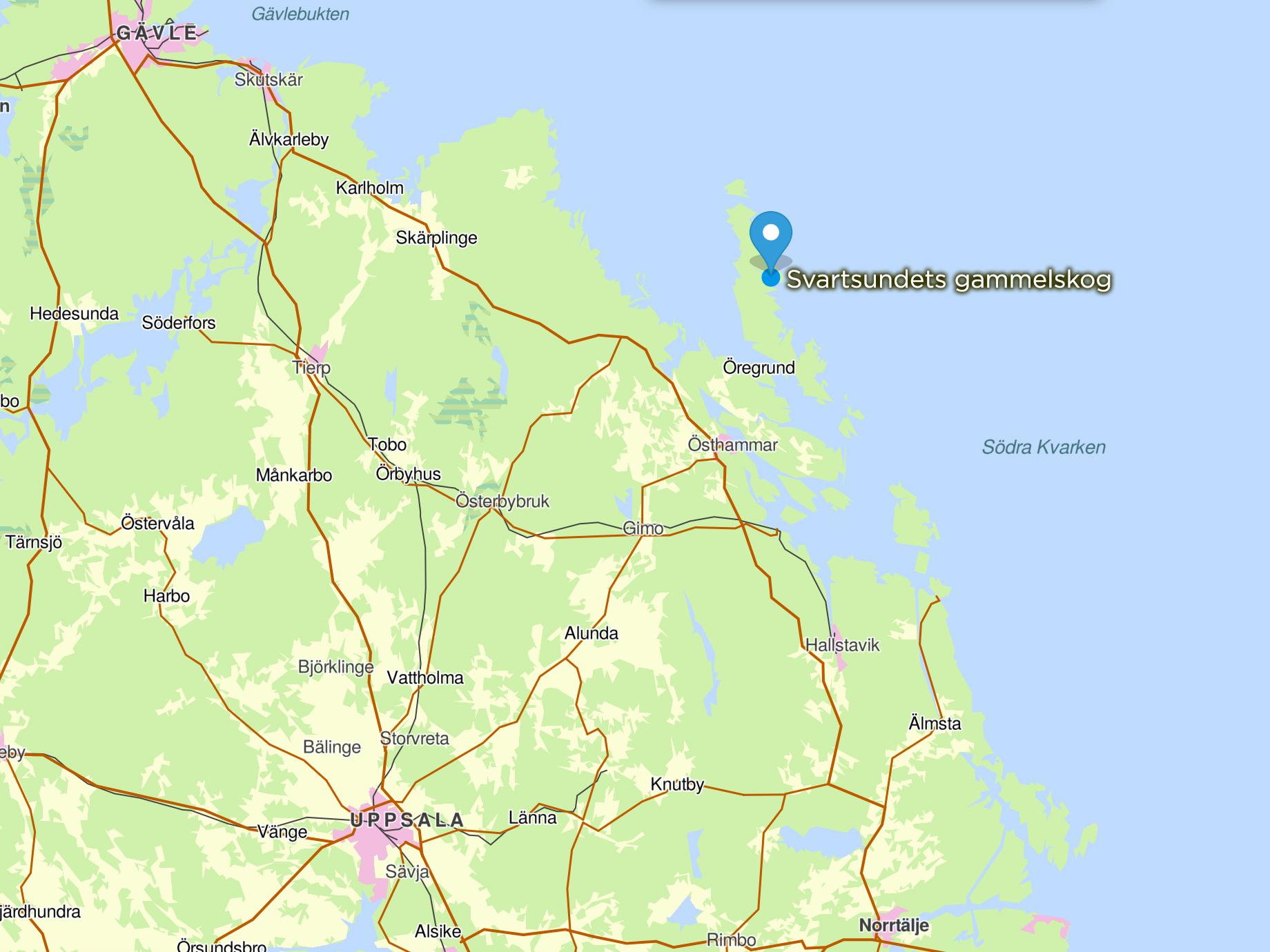Svartsundets old-growth forest
The property
In April 2020, after a long time of searching and longing, Naturarvet finally received several different proposals for possible acquisitions of old-growth forest. They looked promising and talks were held with various parties about different collaborations. However, the price tag on two of the properties was too expensive for our budget.
Naturarvet was awarded the contract for this beautiful piece of nature on Gräsö in the northern Roslagen archipelago in June 2020. The property consists of two parts on either side of Svartsundet, which connects Söderbodfjärden with the archipelago sea outside.
The forest has been untouched for at least the last 60-70 years and is mainly natural forest as mixed coniferous forest with a high proportion of aspen and other deciduous trees, pine hills on slightly higher slopes, coniferous trees with ash in the riparian zone and alder scrub that has grown up on abandoned small meadows.
The forest has never been clear-cut or otherwise managed using modern methods. Pastoral grazing in older times has contributed to the sparse forest cover in some areas. It is also possible that timber for building barns and firewood for fuel was harvested.
Nature
Svartsundets old-growth forest has high nature values due to its long continuity and several red-listed bird species, both pure forest birds and more sea-related species, have been noted. Patrik Fritzon inventoried large sponges in the southern part of the forest in October. A thorough inventory of insects, flora, lichens and mosses has not been carried out. Those who would like to contribute to it are welcome to get in touch.
The large amount of dead wood, old trees and the mosaic of different biotopes provide habitats for a wide range of species. Several signal species and some red-listed species of plants have been recorded. Ash, which grows near the shore, is a highly threatened tree.
A marsh in the northeastern part is a habitat for the nationally red-listed pike frog. It is primarily a potential dispersal site from a pond on the neighbouring property and we are already in discussions with the County Council's ÅGP about improving the marsh as a bullfrog habitat. A prerequisite for the bullfrog is warm and stable water bodies and access to old-growth forest for overwintering. To benefit the species, a pond has been built in the marsh in cooperation with the County Administrative Board's Action Programme (ÅGP).
Here is a list of species noted so far
Reported species Scientific name RED LIST
Bull spider Cortinarius corrosus VU
Copper spider Cortinarius cupreorufus VU
Granrot spider Cortinarius fraudulosus VU
Bitter spider Cortinarius infractus
Egg spider Cortinarius meinhardiiNT
Aniseed spider Cortinarius odorifer
Cortinarius olivaceodionysae NT
Barred beech spider Cortinarius piceae
Blue-footed beech spider Cortinarius barbaricus/metarius
Denise's spider Cortinarius dionysae s. lat.
Bittern mushroom Leucopaxillus gentianeus NT
Four-lobed earth star Geastrum quadrifidum NT
Ramaria safraniolens VU
Sulphurous lactarius scrobiculatus
Sharp drop sponge Hydnellum peckii
Scaly spiny spiny mushroom s.str. Sarcodon imbricatus s.str.
Black spiny mushroom Phellodon niger NT
Worm tongue Ophioglossum vulgatum
Adam and Eve Dactylorhiza sambucina
Buttercup root Epipactis palustris
Horsetail root Neottia nidus-avis
Two-leaf Neottia ovata
Bladderwort Hepatica nobilis
Wormwood Lathyrus vernus
Breadwort Filipendula vulgaris
Spinach Laserpitium latifolium
Butterbur Sanicula europaea
Curly-leaved moss Ulota crispa s.lat.
Aspen moss Neckera pennata VU
Maple lava Bacidia rubella
Mute swan Cygnus olor
Great skua Mergus merganser
Grey heron Ardea cinerea
Sea eagle Haliaeetus albicilla NT
Drill snapper Actitis hypoleucos NT
Laughing gull Chroicocephalus ridibundus NT
Gull Larus canus NT
Sea otter Larus marinus VU
Greylag goose Larus argentatus VU
Tern Sterna hirundo
Ring-necked Pigeon Columba palumbus
Lesser Spotted Woodpecker Dendrocopos minor NT
Hooded Crow Dryocopus martius NT
Crow Corvus corone NT
Raven Corvus corax
Black Tit Periparus ater
Great Tits Lophophanes cristatus
Tawny Tit Poecile montanus NT
Blue Tit Cyanistes caeruleus
Black-backed Toothed Owl Parus major
Leaf Warbler Phylloscopus trochilus
Warbler Phylloscopus collybita
Reed Warbler Acrocephalus scirpaceus NT
Blackcap Sylvia atricapilla
Garden Warbler Sylvia borin
Kingfisher Regulus regulus
Gadwall Troglodytes troglodytes
Nutcracker Sitta europaea
Tree creeper Certhia familiaris
Starlings Sturnus vulgaris VU
Blackbird Turdus merula
Common scoter Turdus philomelos
Double-crested scoter Turdus viscivorus
Red-breasted robin Erithacus rubecula
Black and white flycatcher Ficedula hypoleuca NT
Tree pipit Anthus trivialis
Tree finch Fringilla coelebs
Green finch Chloris chloris EN
Bunting Linaria cannabina
Grey skua Acanthis flammea
Great tit Carduelis carduelis
Wood frog Pelophylax lessonae VU
Climate

An added bonus of Svartsundets old-growth forest is its location in eastern Svealand, where carbon sequestration in the soil is highest in the country. In the alfalfa fields, we have a good record of how much CO2 has been sequestered by tree growth over the past 60 years.
A forest management plan was drawn up by Intermediate Forest prior to the sale and provides a good picture of how much area is now retained from harvesting and thinning and how much CO2 can be sequestered in the different parts of old-growth forest in the future.
Protecting Svartsundets old-growth forest and other similar old-growth forests is the best action we can take to slow climate change with immediate effect
The collection
To the Fundraising page
By the end of June 2020, the contract was signed and the deposit paid. Through the fundraising in memory of the Old Spruce and the surplus from the fundraising for Skarnhålans old-growth forest we had already raised most of the purchase price. We received the acquisition permit in early September and until the end of September 2020 we managed to collect the last SEK 500,000 to pay the final payment. Join us and continue to contribute to the fundraising! Become forest patron, give a gift or 'buy' one forest plot!
Getting here
Svartsundets old-growth forest is located on Gräsö, an island at the northern end of Roslagen in Uppsala County. You can get there by going to Öregrund and from there by regular free car ferry. It is easiest to get there with your own vehicle. From Uppsala, bus 811 goes to Öregrund and from there bus 854 (may need to be pre-booked three hours in advance).
To find the north-eastern part you can enter these WGS84 decimal coordinates 60.431032, 18.461265
The nearest bus stop is Norrbacka vägskäl.
